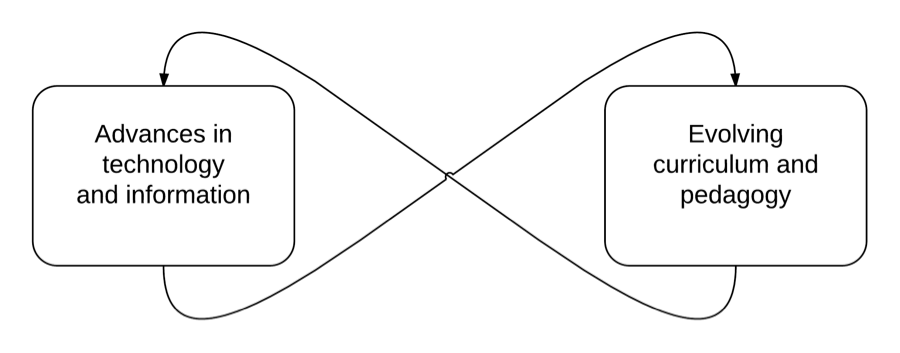Reflexivity was originally used to describe the effects of social science researchers on the situations they were studying; the presence of researchers affects the behavior of subjects, thus the observations made. More recently, the term has been used to describe the influence of ICT on how people use information and how they interact (de Vanjany, 2008). The reflexive relationships between technology and the nature of information tasks and the patterns of interaction are extending to curriculum and instruction, and teachers increasingly perceive performance expectancy in terms of ICT-mediated tasks (see figure 3).

Consider the work of writing research papers. Managing sources and references necessitates researchers expend effort to record detailed information about the sources they cite. Once teachers become aware of digital tools that automate much of that work, they tend to quickly modify research projects and instruction to use them. Performance expectancy is improved as the tools help students compile more complete reference sections with increased efficiency.
As technology becomes more deeply embedded in information practices and tasks, the skills and knowledge students are expected to develop will change accordingly. Although education tends to adopt emerging skills into curriculum more slowly than other organizations, performance expectancy will increasingly be defined in terms of emerging ICT tools. Professional development that focuses on making teachers aware of the tools and practices and that supports educators as they adopt those tools and adapt their practices tends to improve performance expectancy.
Reference
de Vaujany, F. (2008). Capturing reflexivity modes in IS: A critical realist approach. Information and Organization 18(1): 51-72.